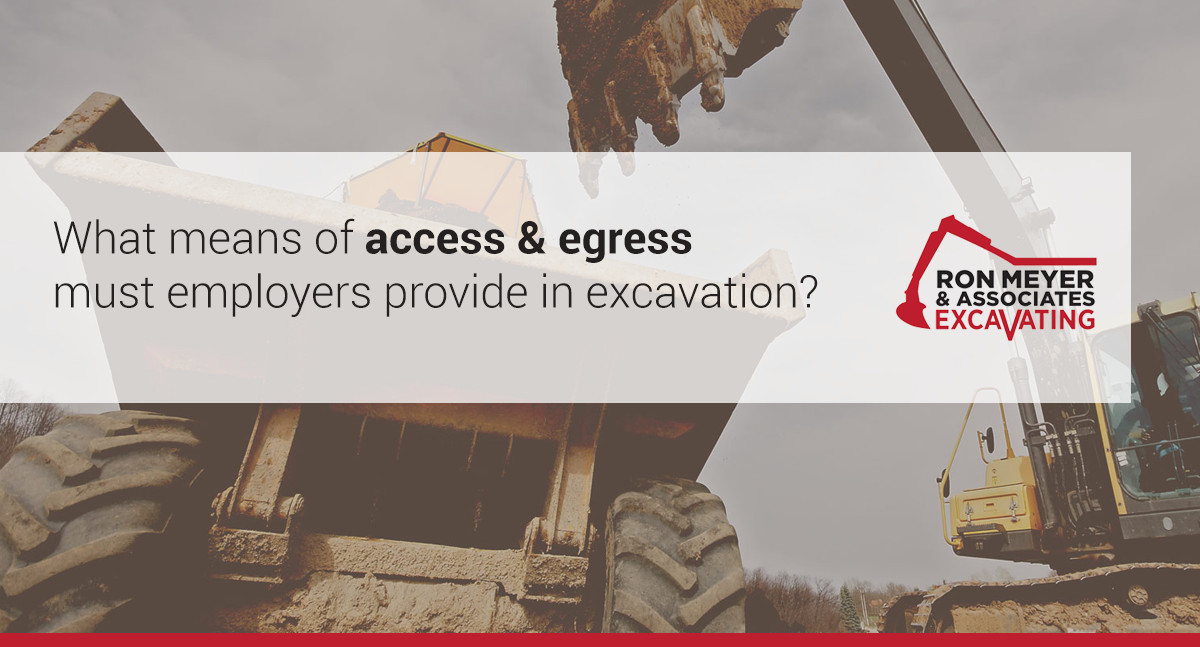
OSHA requires employers to provide ladders, steps, ramps, or other safe means of egress for workers working in trench excavations 4 feet (1.22 meters) or deeper.
The means of egress must be located so as not to require workers to travel more than 25 feet (7.62 meters) laterally within the trench.
Any structural ramps used solely for worker access or egress must be designed by a competent person.
Structural ramps used for access or egress of equipment must be designed by a competent person qualified in structural design.
Also, structural members used for ramps or runways must be uniform in thickness and joined in a manner to prevent tripping or displacement.
Other common questions:
- What is the difference between an excavation and a trench?
- When Must Employers Conduct Excavation Site Inspections?
- What Excavation Hazards Do Employers Need to Address?
- What are the requirements for safely installing & removing protective systems?
- What is a Competent Person in Trenching & Excavation?
- What are the soil classification categories in excavation?
- What is the effect of water accumulation on excavation safety?
At Ron Meyer & Associate Excavating, Inc, we’ve been providing underground and commercial construction to private and commercial businesses for 39 years. As the general contractor or subcontractor, our experienced foremen, equipment operators, pipe layers, truck drivers and well-maintained equipment fleet make us an undeniable choice for your excavating services. Let’s talk about your project!
Sources:
- https://www.osha.gov/Publications/osha2226.pdf

As 45 years of experience as an underground/site contactor and a third generation contractor, Ron takes time to go through each individual project with the supervisor and is responsible for all scheduling and equipment logistics. He’s also involved in all troubleshooting for projects.